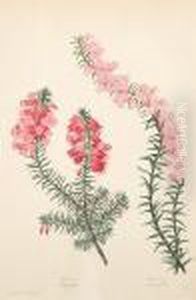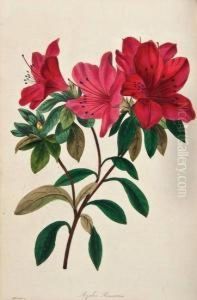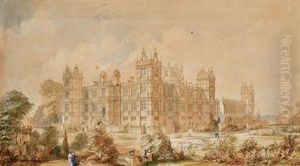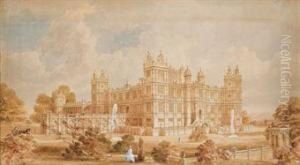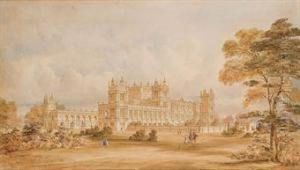Joseph Paxton Paintings
Sir Joseph Paxton was an English gardener, architect, and Member of Parliament, best known for designing The Crystal Palace in London. Born on August 3, 1803, in Milton Bryant, Bedfordshire, England, Paxton was the seventh son of a farming family. He began his career as a garden boy at the age of 15 for Sir Gregory Osborne Page-Turner at Battlesden Park, near Woburn. Demonstrating a keen interest in gardening, he moved on to work at the Horticultural Society's Chiswick Gardens in 1823.
In 1826, Paxton was employed by the Duke of Devonshire, William Cavendish, to work on the gardens of Chatsworth House, one of England's grandest estates. His talent in landscape design and innovative horticultural techniques quickly became apparent. He became the head gardener at Chatsworth and was responsible for significant developments in the estate's gardens and greenhouses. Paxton's work at Chatsworth, particularly his creation of the Great Conservatory, would later influence his design for The Crystal Palace.
His most famous work, The Crystal Palace, came about for The Great Exhibition of 1851. Paxton designed a modular, prefabricated structure of iron and glass that could be quickly assembled and disassembled. The innovative design not only created a vast, unobstructed interior space but also marked a significant moment in the history of architecture, showcasing the possibilities of industrial materials in construction.
Besides his architectural achievements, Paxton made contributions to urban planning, including proposals for city parks in Liverpool and Birkenhead, which influenced the design of public parks throughout the country. He was also involved in railway engineering and served as a Member of Parliament for Coventry from 1854 until his death.
Paxton was knighted by Queen Victoria in recognition of his work on The Crystal Palace. He died on June 8, 1865, in Sydenham, London. His legacy is reflected in his innovative architectural designs and his influence on public space planning as well as horticulture.
